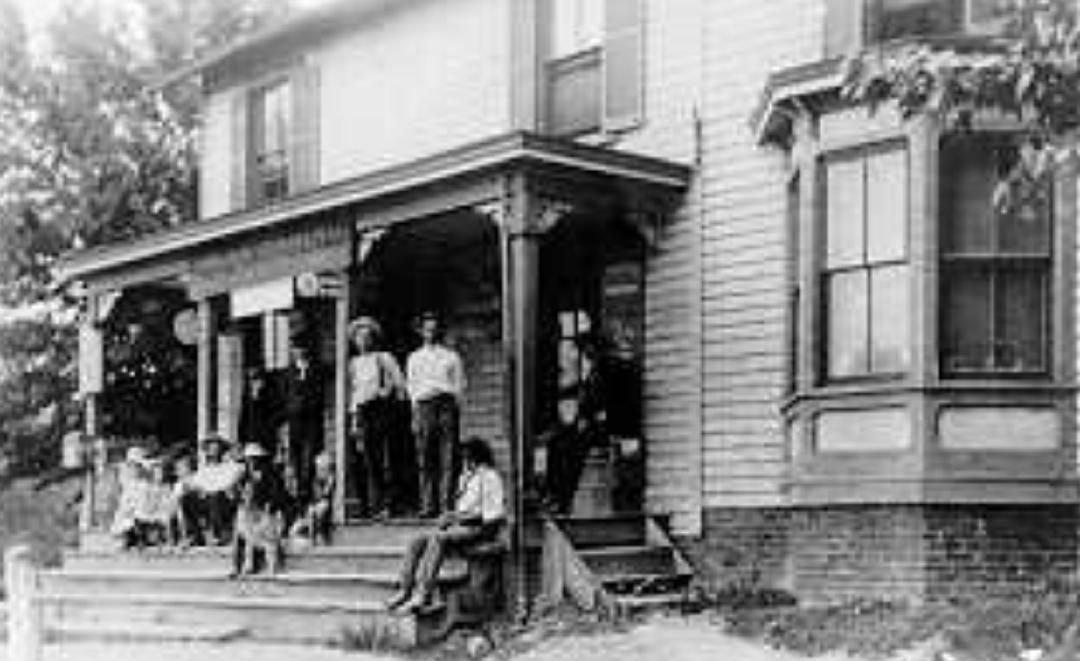Barcroft

The Barcroft community traces its history to the time of George Washington, who surveyed the land and may have built a gristmill here.
Barcroft is a friendly, quiet neighborhood initially established in 1903. It hosts about 800 mostly modest single-family homes and 400 apartments along the outer edge. Most houses were built in the 1930-1970 era, with a growing number of newer, larger homes. Barcroft is represented by an active civic association, the Barcroft School & Civic League. The neighborhood hosts the historic Barcroft Community House built in 1908, initially as a church, then as a school (a genuine Arlington one-room schoolhouse), and then as Barcroft's community home. The Barcroft School & Civic League publishes a monthly neighborhood newsletter, The Barcroft News, first published in 1903.
The Barcroft School & Civic League sponsors neighborhood events ranging from its annual Fourth of July Parade and picnic to a Holiday program with a visit from Santa Claus, meet-the-candidates nights before elections, spaghetti dinners, Easter egg hunts, and National Night Out ice cream socials. These events retain the strong spirit of the community first developed here over 100 years ago.
The Barcroft community traces its history to George Washington, who surveyed the land and may have built a gristmill here. George Washington Parke Custis later built the Arlington Mill on Four Mile Run near Columbia Pike. Custis' mill was destroyed during the Civil War.
The Barcroft neighborhood owes its name to Dr. John Woolverton Barcroft (1817-1895). He was born in New Jersey on March 4, 1817. He was a physician and inventor, graduated from Lafayette College in Easton, Pennsylvania, and earned his medical degree at Jefferson College in Philadelphia. In 1844, he married Lucinda Bray, the daughter of a former sheriff. After practicing medicine for several years in New Jersey, he moved in 1849 to Fairfax County and bought property on Columbia Pike, where it crossed Holmes Run (now Tripps Run) near the Lake Barcroft dam. He took charge of a mill purchased by his father and built his own home and other buildings. After the Civil War, Barcroft constructed and operated a mill on the foundations of the Arlington Mill. It was said to have the most prominent mill wheel on the East Coast.
The earliest homes in the neighborhood were built near Columbia Pike, beginning in 1892 as the subdivision of Corbett. This area was subdivided under the "Barcroft" name in 1903. The community grew to the north and east, and homes gradually filled in the area of the current Barcroft neighborhood. From 1918 through the 1950s, builder Walter O'Hara and his son Robert built several hundred Barcroft homes in various styles. The neighborhood also has at least one Sears home and one Lustron enameled steel home. Today, the central part of Barcroft has a mix of homes built between the 1880s and the 1980s, most more than 30 years old. Beginning in the 1960s, townhouses and apartment buildings were built on the neighborhood's edges along Columbia Pike, South George Mason Drive, and Arlington Boulevard.
The neighborhood's first retail establishment was a country store built about 1885 and owned by Oscar Haring. It was located on Columbia Pike at Four Mile Run. Oscar Haring's store gave way to the Barcroft Shopping Center in 1949, and other retail establishments now line Columbia Pike.
In the early years of the twentieth century, many Barcroft families commuted to Washington on the railroad along Four Mile Run, now known as the Washington and Old Dominion (W&OD). The first rail line was built in 1850, with the stop at Columbia Pike handling passengers, grain for the mill, and live animals. The rail connection was meaningful until paved roads offered more convenience for motorized vehicles. A bus service began in 1919, and gradually, the rail service was discontinued, with passenger service ending in 1932 and freight service ending in 1968.
Barcroft's neighborhood civic association, known initially as the Barcroft Citizens Association, has been in continuous operation since at least 1907. The name was changed in 1908 to The Barcroft School and Civic League (BSCL) when the Barcroft School moved into the newly constructed Barcroft Community House at 8th Street South and South Buchanan Street. The school moved to its present location on South Wakefield Street in 1925. The Barcroft Community House is now designated as a local Historic District and the neighborhood's most important landmark.
The community's first newspaper, a tiny but well-written neighborhood newsletter, was published in 1903. Publication resumed in later years, and the Barcroft News still chronicles neighborhood events.
Throughout its history as a neighborhood, Barcroft has been a quiet residential area whose residents prize its tranquility, ease of access to the District of Columbia, and friendly neighbors.
Images


